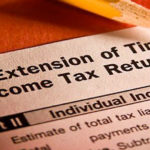A tax lien is something no one wants on their record because it can be such a financial burden to overcome. When a owner of a property does not pay local or state taxes the government has the option to place a lien on the property. Once this takes place, the government issues a tax-lien certificate, which are usually sold in most counties and cities to people who are looking to invest in tax-lien properties through an auction process. Investing in tax-liens can have huge benefits but there can also be some risks to go with it. Here are some of the pros and cons of Investing in tax-lien properties.
Property Ownership
The taxpayer is granted an time period to pay off the tax-lien certificate. If the taxpayer’s time is up and it is still not fully paid, then property is all yours! That’s right, all yours. You will be taking ownership of whatever property you held the lien on.
Homeowner Bankruptcy
A huge con for investing in tax-lien properties is when the owner of the property declares bankruptcy. This is something no investor wants to be a part of because once the owner of the property declares bankruptcy there is strong possibility that your investment may be at risk. I know– that is not something you want to hear especially if you invest a great deal of already. The reason for this is because you won’t be the only one to have claims on the property… the IRS will too.
Return on Investment
When investors look to purchase tax-lien certificates, they gain property plus interest on the tax-related debt of the property. The investor then collects interest on the debt until it is paid off by the owner of the property.
Property Value
Investors should be doing some major research on properties before investing in a tax lien. The reason I say this is because there could be some significant damage done to the property and may require some expensive repairs that may not even be worth investing in. There are investors out there that take the chance, but it can be extremely risky because property can be worth much less than originally expected once inspecting it.





